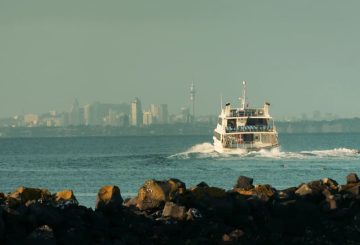자원봉사자들이 베이 오브 플렌티 (Bay of Plenty) 의 해안 모래 언덕을 보호하는 데 도움을 준 프로젝트의 30주년을 기념하고 있습니다.베이 오브 플렌티 지역 의원인 캣 맥밀런 (Kat Macmillan) 은 이 행사에 딱 맞는 날씨였다고 합니다.수녀는 지난 30년간 수고해 준 자원봉사자들에게 감사를 표했다.
자원봉사 주간에 열리는 여러 행사를 통해 이 획기적인 성과를 기념하고 있습니다.이 프로젝트를 주도한 조직인 Coast Care는 프로그램의 성공을 인정하는 가장 좋은 방법은 프로그램에 참여한 사람들을 축하하는 것이라고 믿습니다.
일요일 오전에 파파모아 비치와 오호프의 마라에토타라 보호구역에서 두 가지 행사가 열렸습니다.행사에는 코스트 케어 (Coast Care) 에서 제공하는 가벼운 다과가 포함되었습니다.6월 23일에는 포후투카와 공원, 와이히 비치, 카이투나에서 오타마라카우, 푸케히나 등 두 가지 행사가 더 예정되어 있다.
코스트 케어는 지역 사회, 당국, 학교와 긴밀히 협력하여 베이 오브 플렌티 해변의 모래 언덕을 복원하고 보호하는 해안 복원 프로그램입니다.주민, 해변 이용자, 학교 등 자원봉사자들은 모래 언덕 관리에 시간과 전문 지식을 바칩니다.이 프로그램은 주로 시의회에서 자금을 지원하며, 시의회는 기타 자원과 교육 도구도 제공합니다.
이 프로그램에는 웨스턴 베이 오브 플렌티, 타우랑가, 오포티키, 화카타네 등 4개 해안 지역 및 시의회와 자연보호부가 참여합니다.자원봉사자들은 해변 청소, 토종 사구 식물 심기, 잡초 및 해충 관리, 울타리 설치 등을 돕습니다.
코스트 케어 (Coast Care) 는 또한 사람들에게 해변 보호에 매우 중요한 모래 언덕 관리의 중요성을 교육합니다.토종 식물로 뒤덮인 모래 언덕은 육지와 바다 사이의 장벽 역할을 합니다.이러한 식물이 없으면 모래가 날아가 모래 언덕이 사라져 육지가 날씨에 노출되고 파도가 밀려옵니다.
해안, 특히 모래 언덕의 건강은 해변의 인기, 기후 변화, 해충, 개발 압력의 영향을 받습니다.이로 인해 코스트 케어 그룹의 활동이 더욱 중요해졌습니다.
자원 봉사자들은 코스트 케어 베이 오브 플렌티 지역 사회 식목의 날에 초대됩니다.작업은 쉽고, 즐겁고, 보람도 있습니다.자원봉사자는 튼튼한 신발, 적절한 의복, 원예용 장갑, 삽을 가져와야 합니다.
참여하려면 온라인으로 Coast Care 양식을 작성하여 메일링 리스트에 가입하고 지역 이니셔티브에 대한 최신 정보를 받아보세요.또한 베이 오브 플렌티의 해안 환경을 보호하고 복원하는 방법에 대해서도 자세히 알아볼 수 있습니다.

















































-660x440.jpg)











